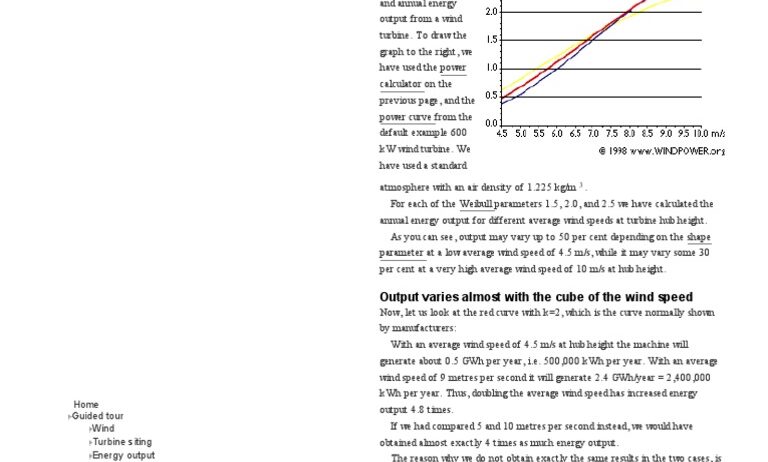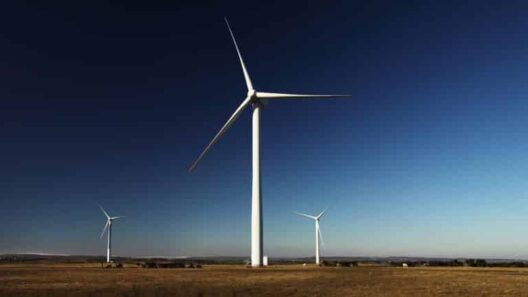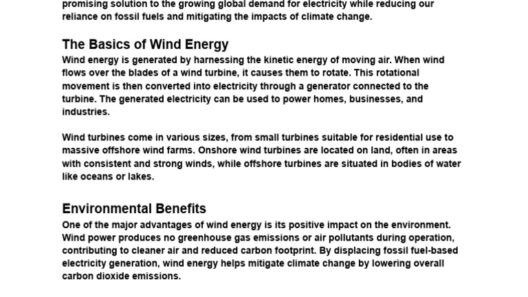Wind energy has emerged as a cornerstone of sustainable power generation, leading the charge against climate change while reshaping global energy matrices. But how much energy do these towering marvels of engineering actually produce? To answer this, we embark on a journey into the mechanics of wind turbines, their capacities, and the factors influencing energy output.
Understanding the Output of Modern Wind Power Systems
Wind turbines harness the kinetic energy of the wind and convert it into electrical energy. This transformation takes place through rotating blades that drive a generator. The productivity of a wind turbine is typically articulated in terms of its capacity factor, a metric that reveals how much energy a turbine generates compared to its maximum potential. For example, a turbine rated at 2 megawatts (MW) operating consistently would ideally produce 2 MW of energy per hour. However, the reality is different; factors such as wind speed and turbine maintenance significantly influence actual output.
Unraveling the Capacity Factor of Wind Turbines
The capacity factor of a wind turbine is the percentage of energy it generates relative to its maximum capacity over a specific period. On average, modern wind turbines have a capacity factor ranging from 30% to 45%. This variation is heavily influenced by site-specific wind conditions, design, and technological advances. For instance, turbines situated in coastal or elevated regions typically enjoy higher average wind speeds compared to their inland counterparts.
Notably, technological improvements have led to larger rotor diameters and taller towers, which can capture more energy from the wind. These advancements have resulted in capacity factors surpassing 50% in some cases, thus improving overall efficiency. Meanwhile, the implementation of data analytics and predictive maintenance further optimizes energy output by minimizing downtime and maximizing operational lifetime.
The Connection Between Wind Speed and Energy Output
At the heart of wind energy generation lies a simple yet profound relationship: wind speed dictates energy output. Turbines possess a rated wind speed, which refers to the threshold at which they operate at maximum efficiency. Below this speed, energy output diminishes significantly, while beyond a certain point, turbines must be shut down to prevent damage from high winds. This intricate balance showcases the importance of wind resource assessment in the planning and development of wind farms.
Fortunately, advancements in meteorological technology enable better forecasting of wind patterns, allowing for strategic turbine placement that maximizes energy production. Moreover, businesses are increasingly adopting a diversified energy strategy by integrating wind power into their energy portfolios. This not only secures a more stable energy supply but also aligns with sustainability goals, increasingly sought after by consumers and stakeholders alike.
Exploring the Variability of Wind Energy Generation
Though wind energy’s contribution is significant, its inherently intermittent nature poses challenges for grid integration. Unlike fossil fuels, which can provide a continuous supply, wind energy fluctuates based on natural wind patterns. As a result, integration of wind energy into existing power grid systems necessitates sophisticated energy management strategies, including energy storage solutions and responsive demand management.
Emerging storage technologies, including advanced battery systems and pumped hydroelectric energy storage, help mitigate variability by storing excess energy generated during peak output periods for use when demand rises or production dips, effectively smoothing the energy supply curve. This not only enhances the reliability of wind energy but also supports a shift toward a more dynamic and responsive energy ecosystem.
Envisioning the Future of Wind Energy
The prospects for wind energy are promising, driven by technological innovation, supportive policy frameworks, and a growing public consciousness around climate action. The deployment of offshore wind farms—where wind speeds tend to be higher and steadier—opens new frontiers for energy generation. Furthermore, floating wind turbine technology, which allows for turbine placement in deeper waters than traditional fixed structures, is gaining traction, potentially unlocking vast new resources for clean energy generation.
Incorporating wind power into contemporary energy strategies signifies not just an environmental imperative but also an economic opportunity. As global investments in renewable technologies increase, wind energy is poised to play a pivotal role in achieving energy independence and transitioning to a low-carbon economy. An understanding of how much energy wind turbines can produce is essential in advocating for policies that bolster this burgeoning sector and ensure a sustainable energy future.
In conclusion, the energy output of wind turbines is a multidimensional concept shaped by numerous variables from technological specifications to environmental conditions. With continuous improvements in technology and systematic planning, wind power stands ready to transform landscapes and redefine our energy paradigm. As society grapples with the urgent need for sustainable alternatives, the possibilities for wind energy are boundless, promising a clean and efficient means to power the future.






